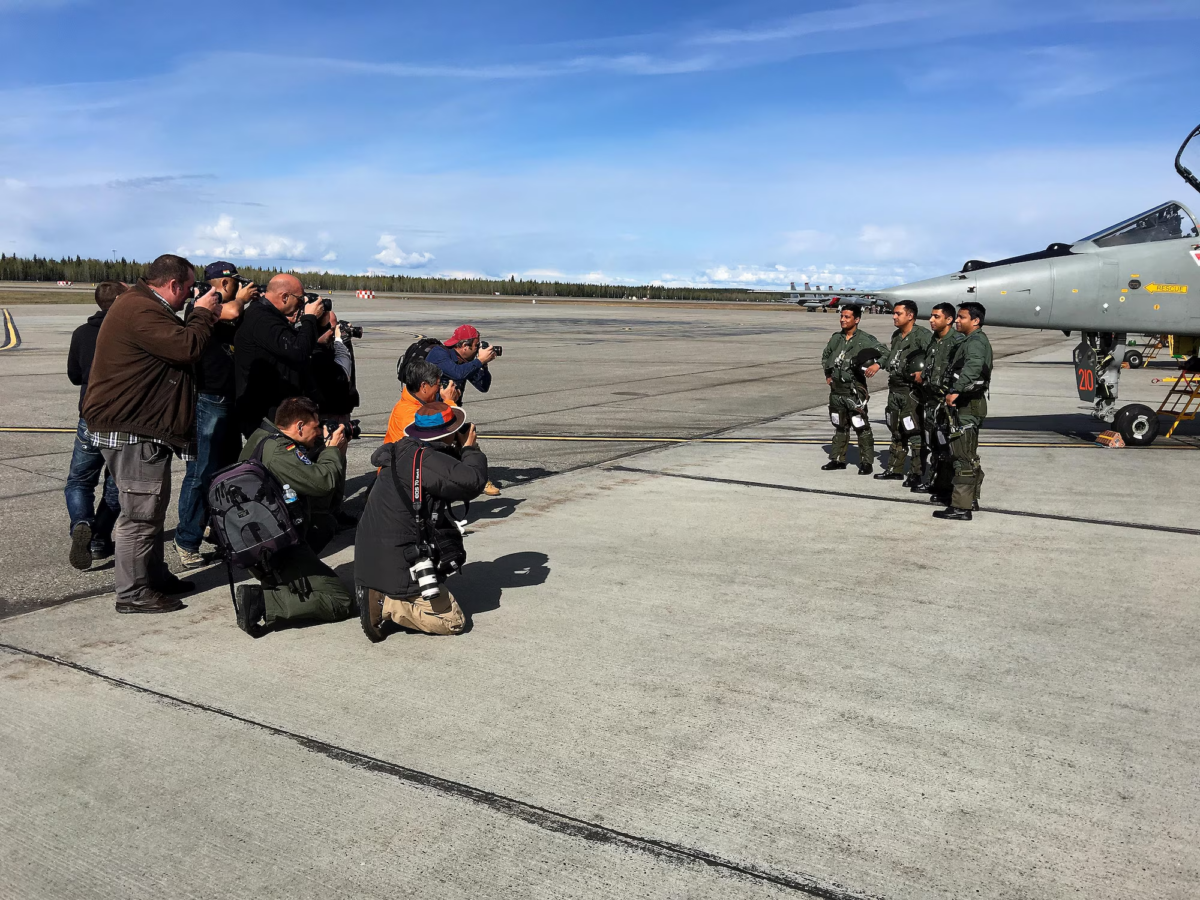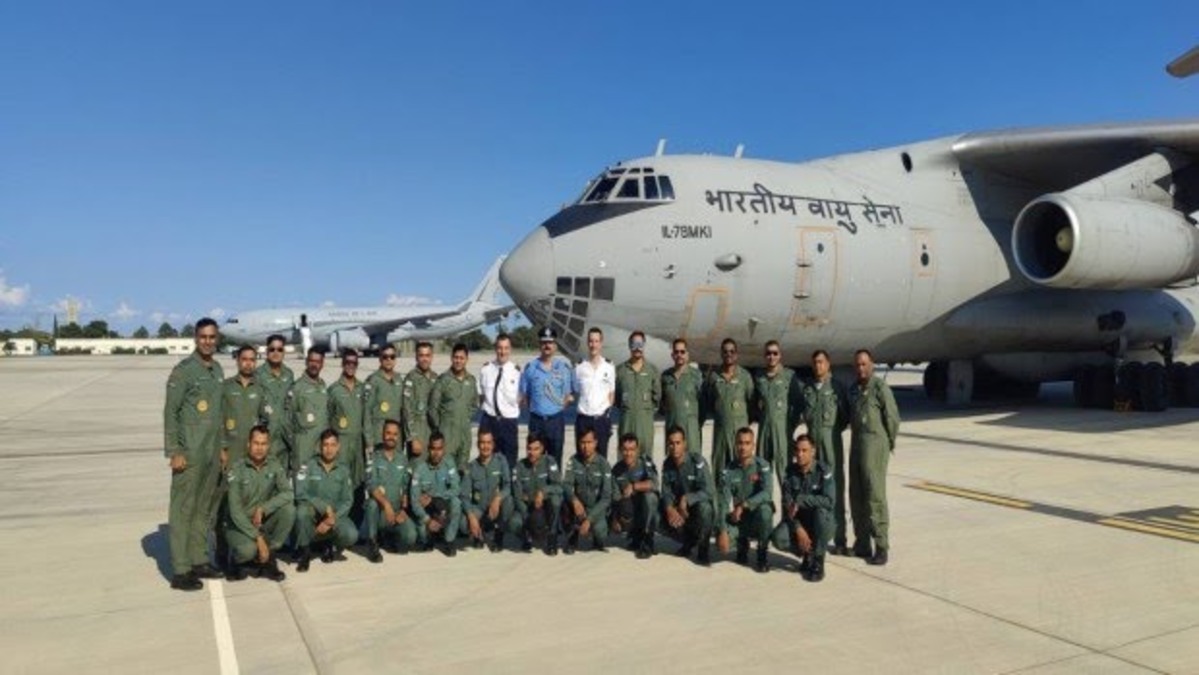An Indian Air Force team has reached Alaska for the multinational exercise Red Flag 24. This multinational training event aims to enhance the skills and interoperability of participating air forces. The IAF’s Rafale fighters, supported by IL-78 refuelers and C-17 transport aircraft, made their way to Alaska with stops in Greece and Portugal.
Red Flag 24 is a two-week advanced aerial combat training exercise. It creates realistic and challenging scenarios to improve the combat readiness of the participating aircrews. This year’s exercise provides a valuable opportunity for the IAF to work alongside international forces and learn from different combat tactics and techniques.

Details of Participation
India has sent eight Rafale fighter jets to Alaska, evenly split between single-seaters and twin-seaters. The exercise, which began on May 30, 2024, involves the IAF working closely with other nations in an intensive 15-day training program. Eielson Air Force Base, located 40 km from Fairbanks, serves as the main site for this multinational collaboration.
Exercise Objectives Red Flag exercises are held at two primary locations: Nellis Air Force Base in Nevada and Eielson Air Force Base in Alaska. These exercises simulate realistic combat scenarios to
provide comprehensive training. The Nevada exercise is organized by the United States Air Force Warfare Center (USAFWC), while the Alaska exercise is managed by the Pacific Air Forces (PACAF).
At Eielson AFB, the 18th Aggressor Squadron, flying F-16 C/Ds, plays a key role. The base also hosts squadrons of the advanced F-35 fighters. The 51st Fighter Wing of the USAF will participate with a more advanced version of the F-16, adding to the variety of training experiences.
Scale and Management
The 353rd Combat Training Squadron at Eielson AFB oversees the exercise, managing three weapons ranges over 180,000 square kilometers. This extensive area, comparable to the size of the Indian state of Karnataka, provides a vast and unrestricted airspace for training. The squadron also manages 28 threat systems that simulate real-world threats. Eielson AFB can host up to 60 aircraft, with another 40 using the Joint Base Elmendorf-Richardson. During peak times, as many as 70 fighters can operate simultaneously, offering an unmatched training environment for pilots and ground controllers
Enhancing Military Readiness
Red Flag-Alaska exercises are directed by PACAF and involve U.S. and partner nation forces. These exercises allow units to exchange tactics and improve interoperability in a realistic threat environment. Past exercises have included participation from the IAF with aircraft like the Sukhoi SU-30MK and SEPECAT Jaguar.

Strategic Benefits for India
The IAF’s participation involves Rafale fighter jets, Il-78 refueling aircraft, and C-17 transport planes. Training alongside advanced U.S. fighter jets like the F-35 provides the IAF with critical experience, especially as this is the first time the Rafales will train with the F-35s. This experience is crucial given China’s deployment of J-20 fighters, which are often compared to the F-35.
Historical Context of Red Flag
The Red Flag exercise was initiated by the United States Air Force after the Vietnam War in 1975. Initially known as Cope Thunder and based at Clark Air Base in the Philippines, it was renamed Red Flag Alaska in 2006 and moved to Eielson Air Force Base. Conducted by the Pacific Air Forces (PACAF), the air component command of the United States Indo-Pacific Command (USINDOPACOM), the exercise has evolved into a critical training ground for air forces from around the world.
Conclusion
The IAF’s involvement in Red Flag 24 demonstrates growing international military cooperation. The exercise not only enhances the operational capabilities of the IAF but also strengthens military ties, paving the way for more effective joint operations in the future.
Also Read:
Indian Navy set to Finalize Rafale M Fighter Jet Agreement with France
INDIA Bloc will select PM within 48 hours
Kejriwal seeks Centre’s help as citizens endure a severe water crisis



